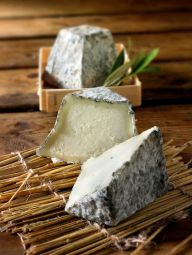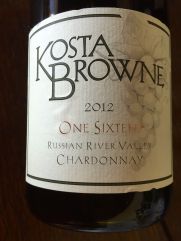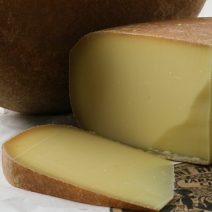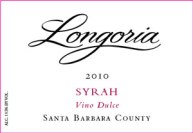The idea began with our desire to support “ArtStart,” a local Santa Rosa non-profit that provides opportunities for high school student artists to create and install public art projects. Our solution was to donate to the auction a wine and cheese pairing for 14 people. After a successful $1,500 donation, it was now time to create a
memorable experience that exceeded the donors expectations. As always, the wine selections would be easier than determining and acquiring the proper cheeses. Even living in Sonoma County where many fine artisan wine and cheeses are produced, research to find unique pairings would require some effort.
To facilitate the outcomes to 1)discover the aromas and flavors of each wine and cheese, 2)understand their backstory and 3) promote discussion and select favorites, we distributed comments from winemakers and sommeliers that assisted us through “power of suggestion.” Seven bottles opened, seven cheeses unwrapped, we were ready to start the global culinary journey.
Pairing #1: Old World vs New World Chenin Blanc
Chenin blanc, originating from the Loire Valley in France, is one of the most versatile wines in the world,
comfortable as a dry, semi-dry, sparkling or dessert wine. Grown extensively in South Africa, Australia and California, the grape has made a huge comeback over the past few decades. We compared the waxy richness and minerality of the 2013 Williams Selyem Chenin Blanc, grown in San Benito County and fermented in concrete eggs at the Russian River Valley winery with the rich 2014 Huet Le
Haut-Leiu Vouvray Sec, a classic semi-dry from France with stone fruit flavors throughout the finish. No favorites here as the group decided that the two wines were different but equal, experiencing the diversity of the grape.
The two wines were paired with Valencay (Val-on-say), a tangy goat cheese from central France and a
young Mahon from the island of Minorca in Spain, both salty with an appealing creamy, nutty flavor. Young, as opposed to aged Mahon (mah-ON), is an accessible semi-soft cheese that becomes hard with distinct salt crystals as it ages. Surrounded by the Mediterranean Sea, locals explain that even the grass and cow’s milk from the island is salty. My usual preference is for the young Mahon, but the citric tanginess of the of the Valencay, rare to the US, was a unique new discovery for all.
Pairing #2: “California Chardonnay and Spanish Goat Cheese”
Sonoma County’s Kosta Browne Winery consistently creates, arguably, the best pinot noir in California, earning Wine of the Year status from Wine Spectator magazine with their 2011 Kosta Browne Pinot Noir Sonoma Coast. The winery has recently begun producing a rich, Burgundian-style chardonnay from the Russian River Valley that epitomizes their high
standards. This pairing features the 2012 Kosta Browne Chardonnay “116” RRV, named after the highway that meanders through the Sonoma Valley, that combines nice aromas of lemon, pears and toast with stone fruits and lemon curd flavors and a lingering mineral finish. To augment these flavors, we chose a pasteurized goat cheese from northeastern Spain.
Garrotxa (gah-ROW-cha), an area in the Catalonia region, north of Barcelona, is home to a collective of goat farmers, many of whom fled urban life to revive the local cheese making trade. The semi-aged, semi-soft cheese has a somewhat sweet, nutty flavor with hints of cooked milk. We used the rich texture of the wine to compliment the buttery sweetness of the cheese to create a celebration on the palate.
Pairing #3: “All-American Classic”
One of this country’s most awarded cheeses, Pleasant Ridge Reserve from Uplands Farms in Wisconsin won Best Of Show by the American
Cheese Society in 2001, 2003 and 2010, the only cheese to do so. After careful consideration of pairing this creamy, nutty, caramel flavored cow’s milk cheese with the Kosta Browne Chardonnay, we opted for the earthy 2013 WALT Pinot Noir “The Corners” Anderson Valley, knowing from experience that they would compliment each other perfectly. From the northerly Mendocino County, WALT is owned by the Napa Valley’s Hall Wines team and responsible for the production of their pinot noir releases. This 2013 vintage, awarded 92-pt by James Laube from Wine Spectator magazine, has a floral, clove bouquet with a rich, vibrant cherry-cola flavor that lingers throughout the finish.
A rare raw cow’s milk cheese in the US, the Pleasant Ridge Reserve comes from a single herd and only from the pasture season, beginning in late spring through the fall. The evenings most creamy, well-integrated cheese with a young, but luscious pinot noir release was an instant hit with our guests and stood out as the best pairing.
Pairing #4: “The Island Pairing”
Geoffrey and Allison Wrigley Rusack have, for decades, produced quality wines in the Ballard Canyon area of the Santa Ynez Valley, near Solvang. Through Allison’s family connections, they gained access to five acres on the old Rancho Escondido site on the island where they began, in 2010,
producing pinot noir, chardonnay and a half acre of a very special varietal. Geoffrey received permission to excavate some cuttings from ancient vines on Santa Cruz Island, another of the Channnel Islands. Analysis determined that they were old zinfandel vines, later transplanted to the Rancho Escondido site.
Having an opportunity to secure one bottle of each varietal annually, the scents of cranberries and old leather foreshadowed the youthful maturity of the 2013 Rusack Zinfandel Santa Catalina Island (Bottle #827), fruit-forward with a complex flavor profile strong enough to compliment aged Mahon (mah-ON),
a hard, textural cheese, salty with toasted nuts and caramel flavors that thoroughly coat the palate, pairing best with a rich, deep flavored wine like zinfandel.
Pairing #5: “Nearly French”
Randall Grahm, founder/winemaker at Bonny Doon Vineyards, is one of the patriarchs of the California Rhone Rangers, replicating the famous blends from Chateaunef-du-pape in France’s southern Rhone Valley. The
syrah/grenache dominant 2010 Bonny Doon Le Cigare Volant Reserve en bonbonne, is a rich, savory red blend with deep berry and tobacco aromas followed by herbal flavors and a long, silky finish. Awarded 92-pt by Wine Enthusiast magazine, it is uniquely aged in 5-gallon glass bottles, the same ones from yesterday’s water coolers. The right cheese to compliment this wine was never in question.
From France’s Basque region near the Pyrenees Mountains, the semi-soft Ossau-Iraty (OH-so ear-ah-TEE), a very wine compatible sheep’s cheese, has complex brown butter, caramel flavors that seem to soften deep
flavored wines like syrah, especially one as earthy and savory as the Le Cigare Volant.
Pairing #6: “Dessert!”
The last and sweet pairing of the evening featured a 2010 Longoria Syrah Port “Vino Dulce” from Santa Ynez Valley with the creamy, buttery Rogue River Blue
from southern Oregon’s Rogue Creamery. The port-style wine, available in Longoria’s Los Olivos tasting room expressing cherry, vanilla and spice flavors, is often served with chocolate desserts but the Rogue River, lacking the aggressive bite of most blue’s and augmented by sage honey, was a memorable compliment to the wine and the experience.
Of course, there were no winner or losers, just some of the world’s finest cheeses carefully matched with fine wines, a culinary delight beyond reproach. Many of these cheeses are available at various gourmet markets, often providing personalized assistance with selections. As a
backup, there are many reliable websites that can offer the most rarest of cheeses. I also often consult food columnist Janet Fletcher’s “Cheese and Wine – A Guide to Selecting, Pairing and Enjoying” and “Cheese Course” by Fiona Beckett as resources for our pairings.






















